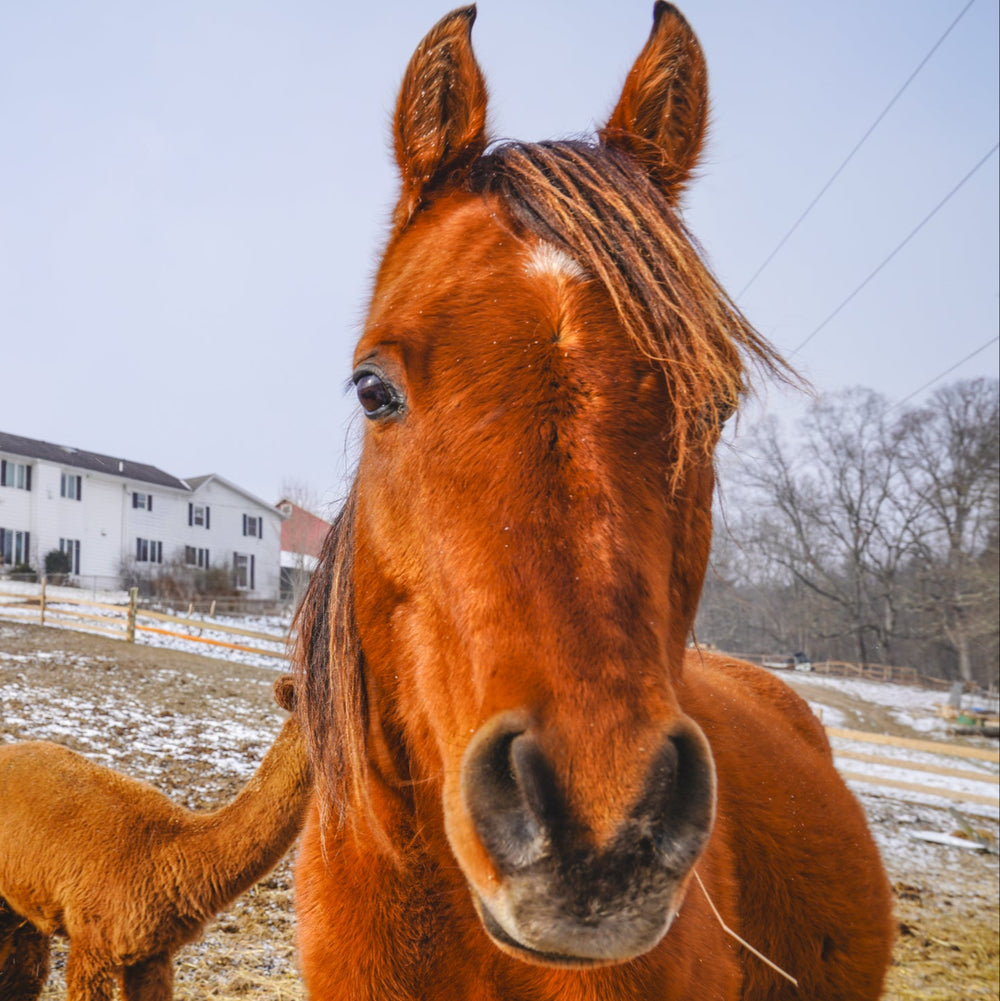Understanding Strangles in Horses: Our Journey With Sammy

Strangles, a highly contagious respiratory disease caused by the bacterium Streptococcus equi, is a condition that every horse owner dreads. It primarily affects young horses but can strike horses of any age. In this blog post, we want to share our experience with strangles, particularly our journey with our beloved horse, Sammy, who faced this illness with incredible resilience.
When Sammy arrived at our sanctuary, he was in a dire state. He was extremely sick and already starving, unable to eat due to the pain and swelling caused by strangles. His condition was heart-wrenching; he was painfully skinny, a shadow of the vibrant horse he should have been. The severity of his situation made it clear that immediate intervention was necessary.
Strangles is characterized by the inflammation of the lymph nodes in the throat, leading to fever, difficulty swallowing, and the classic symptom of swollen lymph nodes that can cause respiratory distress. The infection can spread rapidly in barns and stables, making it essential for horse owners to be vigilant and observant. Unfortunately, strangles is extremely common in kill pens, where horses often face crowded and stressful conditions. Many of our sanctuary horses come from these kill pens, and this fact brings a constant worry about the potential spread of strangles among our residents.
As we began to care for Sammy, we consulted with our veterinarian and learned that strangles can lead to serious complications, such as abscesses that may require surgical intervention. We implemented a strict regimen that included isolation to prevent spreading the disease, supportive care, and pain management. Watching Sammy in pain and struggling to eat was one of the hardest experiences we've faced.
Treatment for strangles typically involves supportive care to ensure the horse stays hydrated and comfortable, while antibiotics may be prescribed to manage secondary infections. In Sammy's case, the veterinary team was proactive in managing his symptoms, and after several weeks of intense care, he slowly began to recover. The joy of seeing him gradually regain his strength and appetite was indescribable. It was a long journey, but with patience and dedication, Sammy transformed from a frail, sick horse into a vibrant and healthy member of our sanctuary.
Preventing strangles requires diligence and awareness. Vaccination is something to discuss with your veterinarian, especially in high-risk environments. Always isolating new arrivals for at least two weeks is crucial to monitor for signs of illness. Maintaining hygiene in the barn and ensuring that shared equipment is clean can also help reduce the risk of infection.
Our journey with Sammy taught us the importance of being vigilant and proactive in caring for our horses. With the right support and care, recovery from strangles is possible, and we encourage all horse owners to stay informed and prepared to protect their beloved animals. Given the prevalence of strangles in horses from kill pens, it is essential that we remain proactive in monitoring our sanctuary horses for any signs of illness, ensuring their health and well-being as a top priority. Sammy's story is a testament to the resilience of horses and the power of dedicated care.
With much love and forever learning-
P'nuts Freedom Farm





